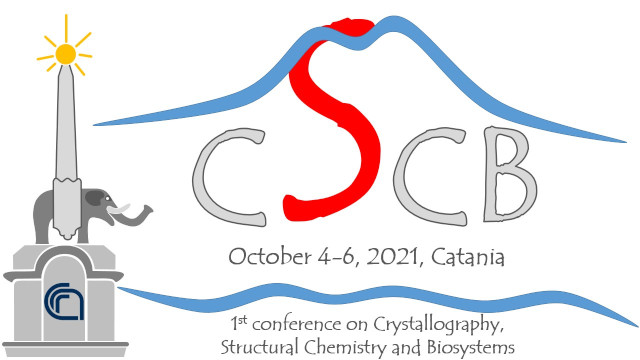Speaker
Description
The promising, fascinating, and unique optoelectronic properties of lead-halide and lead-chalcogenide nanocrystals motivated, during the last decade, an always increasing scientific interest. The excellent performances of CsPbX3 (X = Cl,Br,I) and PbE (E=S,Se) as nanocrystalline semiconductors naturally raised the attention about the potential advantages of lead-chalcohalides, namely compounds within the Pb-E-X ternary diagram. However, this ternary diagram is mostly unexplored, with only two metastable materials being known through high-pressure and temperature solid-state synthesis [1,2].
In the presented work, the versatility of colloidal chemistry gave us access to a whole series of Pb-S-X compounds. At the same time, it posed the challenge of elucidating the structure of a yet unknown material, namely Pb4S3Br2, that was obtained in the form of small nanocrystals. This challenge was tackled by a combination of techniques: 3D electron diffraction (3D-ED) [3], X-ray powder diffraction (XRPD), and 3D electron tomography (3D-ET) [4]. The extremely small size of crystallites called for a synergic combination of such techniques, which ensured a successful structure solution and proved to be a useful approach for overcoming the limits related to each individual technique. First, 3D-ED provided a plausible structural model by the application of Direct Methods with SIR2019 [5]. Then, 3D-ET confirmed the extracted cell parameters, and helped ruling out the presence of geminates or heterostructures. Finally, the reliability of the structural model was tested by an ab-initio structure solution process by XRPD that was performed through EXPO2014 [6]. Due to the broad diffraction peaks typical of nanocrystals, the indexing process by XRPD found many plausible candidates. At this stage, the prior information on the cell parameters provided by 3D-ED and 3D-ET was essential. In addition, the prior knowledge on the space group identified by 3D-ED (i.e., Pnma) compensated the failure of the space group determination by XRPD induced by the unavoidable errors on the integrated intensities. The structure determined by XRPD and refined by Rietveld method via Fullprof [7] was very similar to the one provided by 3D-ED: the similarity between the two structure models further validated the structural solution. The equivalence of the two structural models was further proved via DFT calculations (see Figure 1) that, applied to both, converged to the same crystal structure.
The main crystallographic results are here presented.
[1] D. Ni, S. Guo, Z.S. Yang, K.M. Powderly, R.J. Cava Solid State Sci. 2019, 91, 49.
[2] D. Ni, S. Guo, Z.S. Yang, K.M. Powderly, R. Zhong, R.J. Cava J. Solid State Chem. 2019, 280, 120982.
[3] M. Gemmi, E. Mugnaioli, T.E. Gorelik, U. Kolb, L. Palatinus, P. Boullay, S Hovmöller, J.P. Abrahams ACS Central Science 2019, 5, 1315.
[4] S. Toso, Q. A. Akkerman, B. Martin-Garcia, M. Prato, J. Zito, I. Infante, Z. Dang, A. Moliterni, C. Giannini, E. Bladt, I. Lobato, J. Ramade, S. Bals, J. Buha, D. Spirito, E. Mugnaioli, M. Gemmi, L. Manna J. Am. Chem. Soc. 2020, 142, 10198.
[5] M.C. Burla, R. Caliandro, B. Carrozzini, G.L. Cascarano, C. Cuocci, C. Giacovazzo, M. Mallamo, A. Mazzone, G. Polidori J. Appl. Cryst. 2015, 48, 306.
[6] A. Altomare, C. Cuocci, C. Giacovazzo, A. Moliterni, R. Rizzi, N. Corriero, A. Falcicchio, J. Appl. Cryst. 2013, 46, 1231.
[7] J. Rodriguez-Carvajal, J. Gonzalez-Platas, T. Roisnel, N. A. Katcho, C. Frontera, L.C. Chapon, O. Baltuano FullProf Suite 2020, https://www.ill.eu/sites/fullprof.

